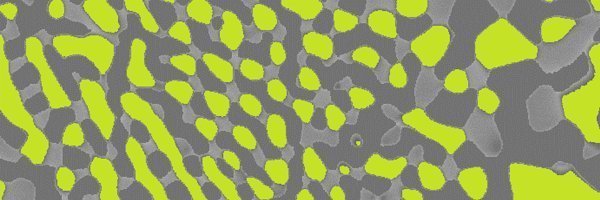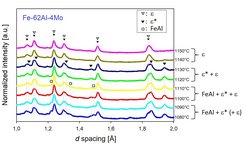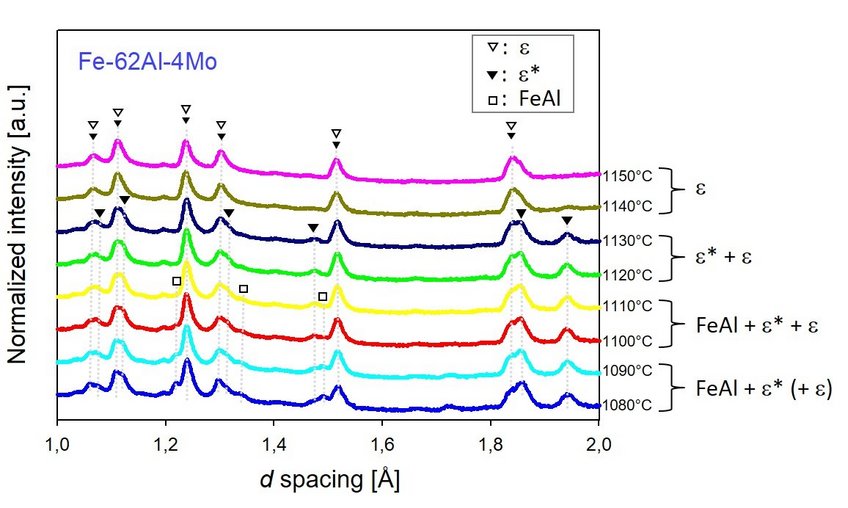
Structure and stability of the γ brass-type high-temperature phase in Al-rich Fe-Al(-Mo) alloys
The effect of Mo additions on the stability and crystal structure of the high-temperature phase Fe5Al8 (frequently called e phase) is investigated in a cooperation with the Los Alamos Neutron Science Center LANSCE.
From previous studies it is known that the binary phase has a cubic Cu5Zn8-type structure (so-called γ1 brass). On the other hand, in some quenched samples containing Mo, the hexagonal Cr5Al8-type γ2 brass structure was detected at room temperature indicating a structural transformation by the ternary alloying addition. To understand this change in structure type and transformation kinetics, a number of ternary alloys containing up to 10 at.% Mo were produced by crucible-free levitation melting and are characterized by electron probe microanalysis, differential thermal analysis (DTA), and metallographic investigations. It is well known that the binary high-temperature Fe5Al8 phase decomposes at 1095°C by a spontaneous eutectoid reaction that cannot be suppressed even by rapid quenching. Therefore, in situ high-temperature time-of-flight neutron diffraction experiments were performed at LANSCE (see Fig. 1 for an example) and the observed high-temperature phase transformations are correlated to the DTA results while the high-temperature crystal structures are analysed by a Rietveld method and compared to the binary case.

Fig. 1: High-temperature neutron diffraction pattern of a ternary alloy Fe34Al62Mo4 showing a transformation from ε* phase (rhombohedral γ2 brass) to ε phase (cubic γ1 brass) with increasing temperatures. The coexistence of both phases in the temperature range 1080 to 1130°C indicates a first-order transformation.
